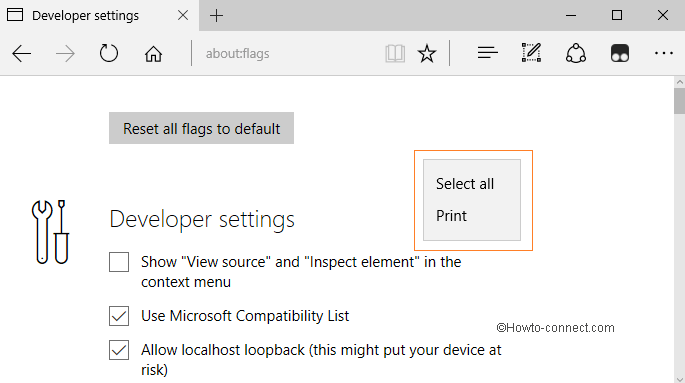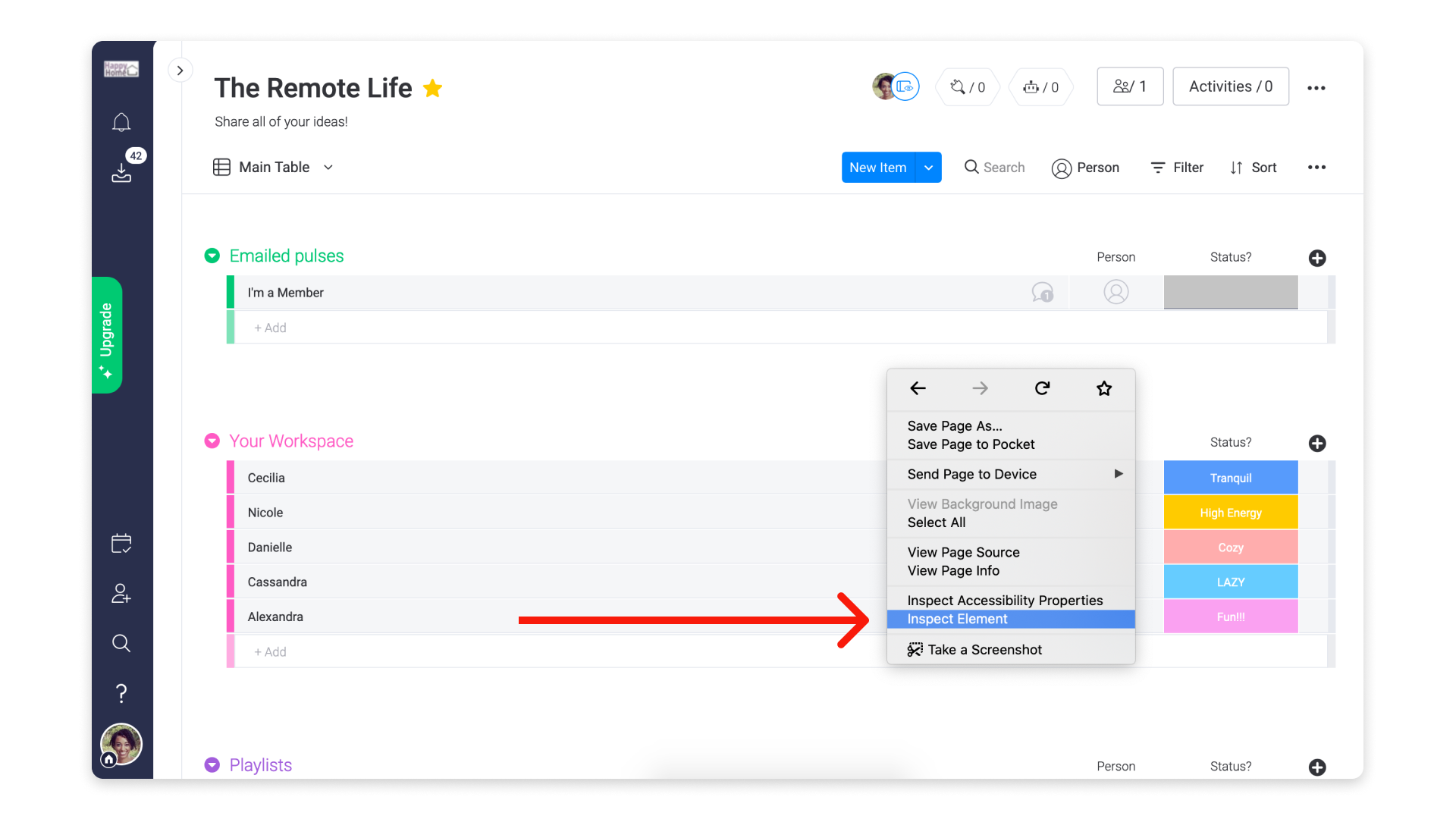
HOTKEY INSPECT ELEMENT CHROME DOWNLOAD
Reorder Network Responsesīy default, the Network panel shows a table of requests and responses in download order. The Network panel provides an Online drop-down in Chrome and a Throttling drop-down in Firefox which allows you to emulate specific network speeds.Ĭhrome also provides a facility to add your own throttling profiles. Similarly, there’s little point testing your system a 1gbps connection when most users access over 3G. This provides a better assessment of first-time page loads.

Disable the Network CacheĬheck Disable cache in the Network panel to load all files from the network.
HOTKEY INSPECT ELEMENT CHROME CODE
Note that Chrome does not appear to remember used/unused code when you navigate to a new page, but I expect this will be provided in a future release. Unused code is highlighted in red in the line number gutter. Select Coverage from the DevTools More tools sub-menu then hit the record button and browse around your application. Find Unused CSS and JavaScriptĬhrome’s new Coverage panel allows you to quickly locate unused code. In addition, you can right-click any element in the DOM view and select Screenshot Node. (Chrome 74+ also permits area capture.)įirefox provides the Take a screenshot system which is available from most menus. The file will be saved to the download folder. Capture Screenshotsįrom Chrome’s command palette ( ctrl + shift + p), type ‘screenshot’ then choose an option to capture the current viewport, the whole page, or the currently-active element. Click the ratio to view how this rates against AA and AAA accessibility standards which ensure text can be read by most people:Īny color below the line on the color swash will pass AA contrast recommendations. The color picker also shows the contrast ratio which indicates the visual difference between the foreground text and background color. The panel can be clicked to show further colors. Chrome also shows the colors used in the page at the bottom of the panel: Most browsers show a color picker when you click any CSS color property. Hit Esc to show and hide a console window in the bottom pane. The console is useful regardless of which DevTool panel you’re using.

It provides quick access to most functions and source files (hit backspace to remove the >). Command PaletteĬhrome DevTools offers an editor-like command palette.

You can start browsers in incognito mode manually or by adding -incognito to Chrome or -private to Firefox’s command line. The mode is ideal for testing Progressive Web Apps (PWAs) and log-in systems. Incognito/private mode does not retain data such as cookies and localStorage after the browser is closed. Similarly for Firefox: firefox -devtools -url (The executable name may differ across systems.) For Chrome, create a desktop icon with the following Chrome command-line options: chrome -auto-open-devtools-for-tabs where is your development URL.

When working on a web application, it may be practical to create a dedicated desktop shortcut to launch your browser, open the URL and launch DevTools in a single step. This allows you to set options such as the tools shown, theme, tab sizes, color units and more. Docking options are found in the main three-dot menu in Chrome:ĭevTool settings can be accessed from the same menu or by pressing F1. If you require more room, undock it to a separate window. The DevTools pane can be docked to the left, right or bottom of the browser window. From DevTools, press F1 or select Settings from the three-dot menu at the top-right. or right-click any element on the page and choose Inspect or Inspect Element.Ĭhrome provides useful keyboard shortcut assistance.Using a menu to launch DevTools wastes valuable seconds! Try one of these options instead: Chrome’s DevTools are described in most cases but alternative options are shown for Firefox where available. We’ll explore a range of features you may or may not have considered. It’s become possible to alter and inspect any aspect of your web application but few of us venture beyond the basics. During the past decade, browser development tools (browser DevTools) have evolved from basic JavaScript consoles to fully-integrated development and debugging environments.


 0 kommentar(er)
0 kommentar(er)
